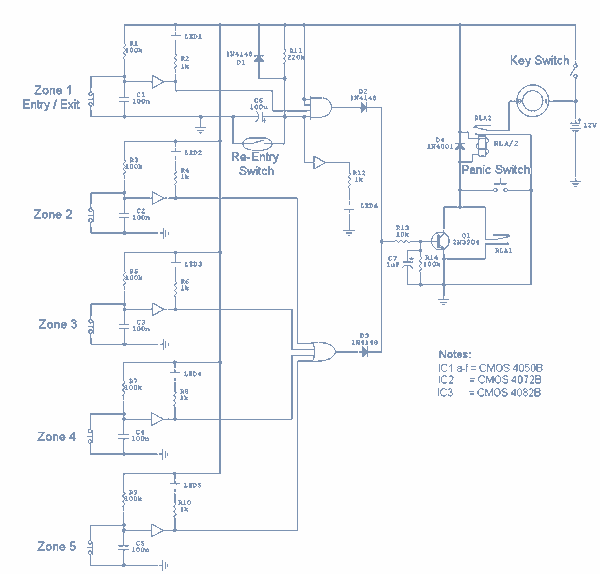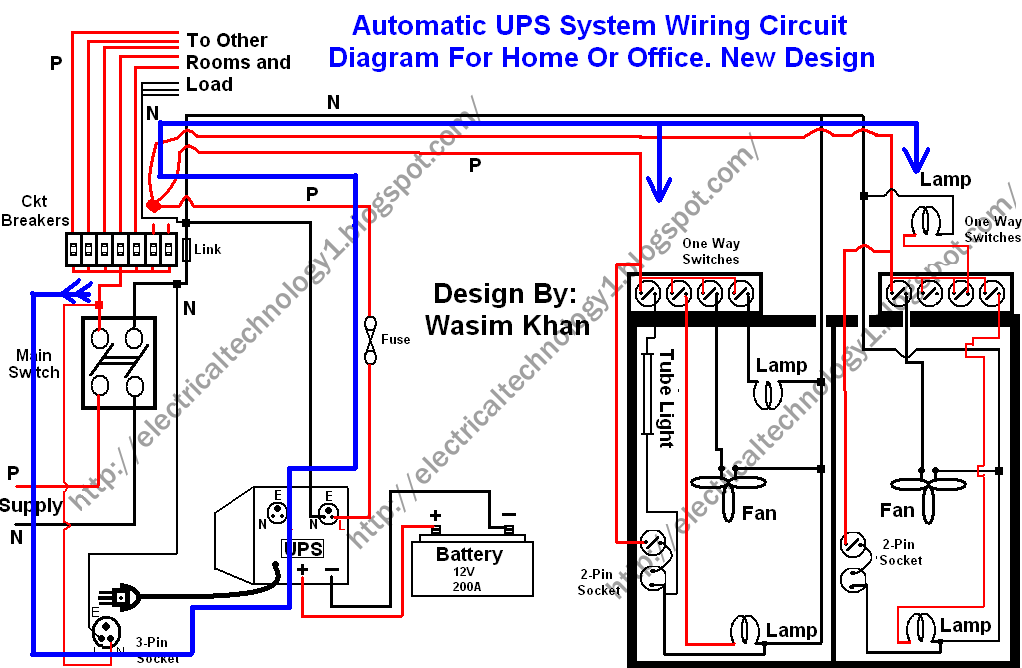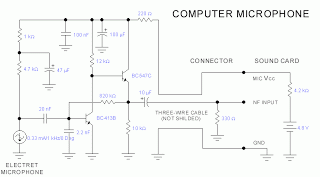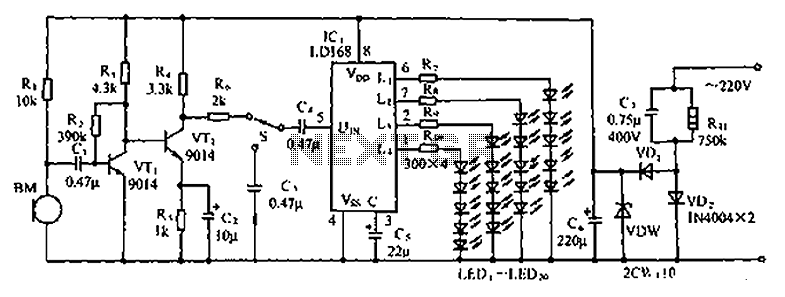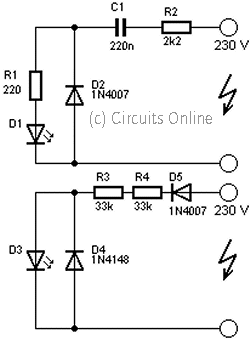
buzzer circuit pic microcontroller

A buzzer circuit utilizes a PIC microcontroller to drive a piezo buzzer. The microcontroller is a low-power processor that is ideal for portable and compact devices where battery conservation is essential.
The buzzer circuit employs a PIC microcontroller, which serves as the control unit for activating the piezo buzzer. The piezo buzzer itself is a transducer that converts electrical energy into sound, making it suitable for auditory alerts and notifications in various applications. The choice of a PIC microcontroller is noteworthy as it provides precise control over the buzzer's operation while maintaining low power consumption, which is crucial for battery-operated devices.
In designing the circuit, the microcontroller's output pin is connected to the piezo buzzer. A simple switching mechanism can be implemented using a transistor if higher current is required by the buzzer than the microcontroller can provide directly. Additionally, resistors may be included to limit current and protect the microcontroller from potential damage.
The programming of the microcontroller can be accomplished using an integrated development environment (IDE) compatible with PIC devices. The firmware can be designed to generate different frequencies and duty cycles, allowing the buzzer to produce various tones or patterns, which can be useful for signaling different conditions or alerts.
Overall, this combination of a PIC microcontroller and a piezo buzzer creates an efficient and effective solution for sound generation in compact electronic devices, ensuring that users receive timely auditory feedback while optimizing battery life.buzzer circuit, pic microcontroller, piezo buzzer is a computer chip. It is overkill for driving a piezo buzzer. It is certainly a very low power processor that is optimum for portable and small devices where battery power must be conserved.. 🔗 External reference
The buzzer circuit employs a PIC microcontroller, which serves as the control unit for activating the piezo buzzer. The piezo buzzer itself is a transducer that converts electrical energy into sound, making it suitable for auditory alerts and notifications in various applications. The choice of a PIC microcontroller is noteworthy as it provides precise control over the buzzer's operation while maintaining low power consumption, which is crucial for battery-operated devices.
In designing the circuit, the microcontroller's output pin is connected to the piezo buzzer. A simple switching mechanism can be implemented using a transistor if higher current is required by the buzzer than the microcontroller can provide directly. Additionally, resistors may be included to limit current and protect the microcontroller from potential damage.
The programming of the microcontroller can be accomplished using an integrated development environment (IDE) compatible with PIC devices. The firmware can be designed to generate different frequencies and duty cycles, allowing the buzzer to produce various tones or patterns, which can be useful for signaling different conditions or alerts.
Overall, this combination of a PIC microcontroller and a piezo buzzer creates an efficient and effective solution for sound generation in compact electronic devices, ensuring that users receive timely auditory feedback while optimizing battery life.buzzer circuit, pic microcontroller, piezo buzzer is a computer chip. It is overkill for driving a piezo buzzer. It is certainly a very low power processor that is optimum for portable and small devices where battery power must be conserved.. 🔗 External reference
